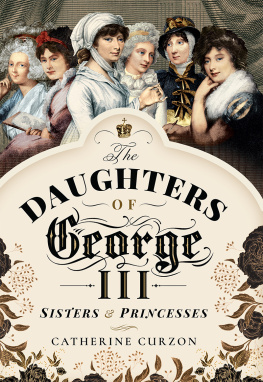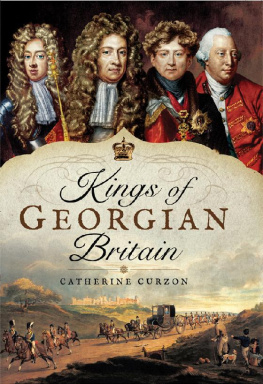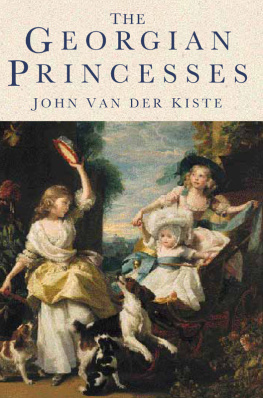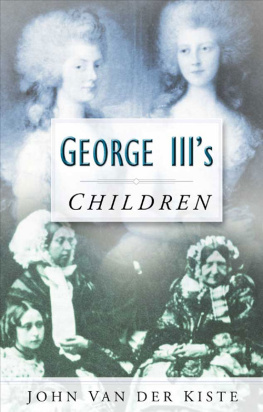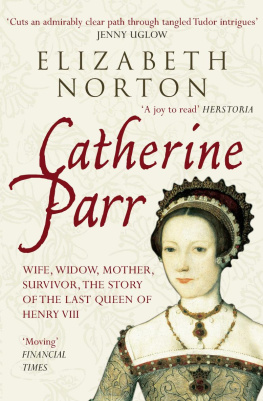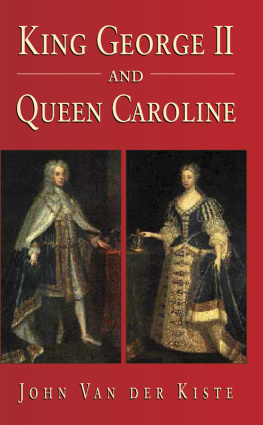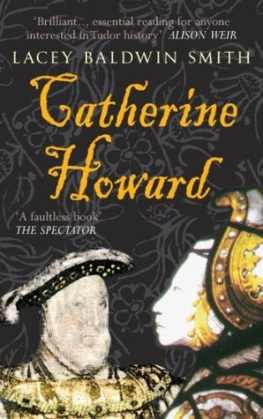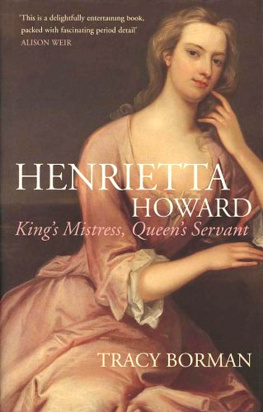First published in Great Britain in 2021 by
Pen & Sword History
An imprint of
Pen & Sword Books Ltd
Yorkshire Philadelphia
Copyright Catherine Curzon 2021
ISBN 978 1 52676 272 6
eISBN 978 1 52676 273 3
Mobi ISBN 978 1 52676 274 0
The right of Catherine Curzon to be identified as Author of this work has been asserted by her in accordance with the Copyright, Designs and Patents Act 1988.
A CIP catalogue record for this book is available from the British Library.
All rights reserved. No part of this book may be reproduced or transmitted in any form or by any means, electronic or mechanical including photocopying, recording or by any information storage and retrieval system, without permission from the Publisher in writing.
Pen & Sword Books Limited incorporates the imprints of Atlas, Archaeology, Aviation, Discovery, Family History, Fiction, History, Maritime, Military, Military Classics, Politics, Select, Transport, True Crime, Air World, Frontline Publishing, Leo Cooper, Remember When, Seaforth Publishing, The Praetorian Press, Wharncliffe Local History, Wharncliffe Transport, Wharncliffe True Crime and White Owl.
For a complete list of Pen & Sword titles please contact
PEN & SWORD BOOKS LIMITED
47 Church Street, Barnsley, South Yorkshire, S70 2AS, England
E-mail:
Website: www.pen-and-sword.co.uk
Or
PEN AND SWORD BOOKS
1950 Lawrence Rd, Havertown, PA 19083, USA
E-mail:
Website: www.penandswordbooks.com
Illustrations
Ehrengard Melusina von der Schulenberg, Duchess of Kendal.
Mrs Howard, Countess of Suffolk, after Charles Jervas.
Lady Henrietta Howard, after Thomas Gibson, 1720.
King George I, John Faber, after D Stevens, 1722.
George Augustus, Prince of Wales, later George II, by Sir Godfrey Kneller, 1724.
Sophia Dorothea of Celle, wife of George I.
Caroline of Ansbach, wife of George II, by Alexander van Haecken, after Jacopo Amigoni, 1736.
Electress Sophia, mother of George I, by Petrus Schenck.
Countess Clara von Platen.
Count Philip Christoph von Knigsmarck, lover of Sophia Dorothea of Celle.
The murder of Count von Knigsmarck.
Sophia Charlotte von Kielmansegg, Countess of Darlington, halfsister and falsely rumoured to be the mistress of George I, after Sir Godfrey Kneller.
George II Augustus, by Alexander van Haecken, after Sandie, 1736.
Tea Party at Lord Harringtons House, St. Jamess , by Charles Philips, 1730. George Berkeley leans on the left of the mantelpiece, with Henrietta Howard seated beside him to his right.
Horace Walpole, by Henry Hoppner Meyer, after Sir Thomas Lawrence, 1795.
William Cheselden, by Jonathan Richardson.
Alexander Pope, after Sir Godfrey Kneller.
Lord John Hervey.
Mary Lepell, Lady Hervey, by James Heath, 1798.
Robert Walpole, by Jacob Houbraken, after Arthur Pond, 1746.
Jonathan Swift, by Pierre Fourdrinier, after Charles Jervas.
John Gay, after Sir Godfrey Kneller.
Baroness von Kielmansegg, Countess of Darlington, after Sir Godfrey Kneller.
Philip Dormer Stanhope, 4th Earl of Chesterfield, son-in-law of Melusine von der Schulenberg, after William Hoare.
The South Sea Scheme , by William Hogarth, 1721.
Robins Reign , mocking corruption in the government of Robert Walpole, by Caleb DAnvers, 1731.
St Jamess Palace and the Mall.
Kensington Palace, photographed by George Tsiagalakis.
Leicester House, 1748.
Marble Hill House, North Side, photographed by Jim Linwood.
Back cover: The Funeral of King George I , by Leonard Schenk, after Adolf van der Laan, 17271729.
Plates 1, 2, 3, 8, 10, 12, 19, 23, 24: Internet Archive Book Images. Public domain.
Plates 4, 14, 15: Courtesy of the Yale Center for British Art. Public domain.
Plates 5, 16, 17, 25, 26: Courtesy of the Wellcome Library, London, under Creative Commons Attribution only licence CC BY 4.0.
Plates 6, 11: Courtesy of the British Library. Public domain.
Plates 7, 13, 20, 21 and back cover: Courtesy of the Rijksmuseum, under Creative Commons Public Domain Dedication CC0 1.0 Universal licence.
Plate 9: Courtesy of Universittsbibliothek Heidelberg, under Creative Commons Attribution-ShareAlike 3.0 Unported licence.
Plate 18: Courtesy of The New York Public Library. Public domain.
Plate 22: Project Gutenberg. Public domain.
Plates 27, 29: Wikimedia Commons. Public domain.
Plate 28: Wikimedia Commons, under Creative Commons Attribution-ShareAlike 4.0 International licence CC BY-SA 4.0.
Plate 30: Wikimedia Commons, under Creative Commons Attribution 2.0 Generic licence (CC BY 2.0).
Introduction
We are ruined by trulls. Nay, what is more vexatious, by old ugly trulls, such as could not find entertainment in the most hospitable hundreds of Old Drury.
Over the centuries, for better or worse, countless monarchs have ruled countless kingdoms. Some of them have been forgotten, some of them have been celebrated. Some were benevolent, some tyrannical, but there was one thing they could agree on: marriage was a serious business. And business was the operative word. When a monarch or their heir took a spouse, the decision was often one of politics rather than romance. The wrong choice of a significant other might have ramifications that could shatter a kingdom, whilst the right ring on the right finger had the power to expand an empire, stuff even the most ailing coffers full of gold or cement a conquering dynasty for centuries.
Thats not to say that royal matches havent been made for love, nor that those made for duty couldnt turn into devoted partnerships, but for every love match, there were plenty that began and ended as business. Some of these were famously disastrous, some made it work against the odds, and some hovered in between thanks to tolerance, patience or even the odd bit of extramarital dabbling. Yet whether famous or forgotten, all of these marriages had one duty at their heart: to secure succession.
The line of royal succession is the key to immortality. Play the game right and your line could rule for centuries. Get it wrong and it might be cut off, reducing a sovereign to a withered branch on the family tree. To secure the heir and the spare, or even better, spares , was the duty of every royal couple. A royal marriage was a job for life.
There was one thing that royal wives had to tolerate that their husbands didnt. The mistress, or matresse-en-titre , as she was known in France, was as much a part of the court as the monarchs ministers, regarded by some as a political marvel, by others as an avaricious tart. Yet if the modern understanding of a royal mistress is a woman whose role was purely decorative or sexual, that was far from the case in Georgian times. In fact, it was a hard-won position and one that some ladies had to employ all their wiles to cling onto. As youll see, in the case of one of the two subjects of this book, the kings mistress was a lot more desperate to let go than to hang on.


